10 tips to create an effective Cart Recovery Programme
According to research recently released by Britain’s Retail E-mpire, the UK will become the world’s leading ecommerce exporter, with online sales generated by UK retailers from international markets expected to soar sevenfold to £28bn by 2020. However, according to our latest research, on average 84% of people who visit a site abandon their purchase before checkout, costing retailers billions in lost sales.
So what can we do about this problem? Well first of all – let’s switch it around and look at it as a fantastic opportunity rather than a problem. Opportunities are always easier to action than problems – right?
The Opportunity for retailers
So we now have a lot of potential buyers who in many case simply need a small nudge in order to complete the purchase and the good news is, that these abandoned sales are 10 times more likely to convert than other site visitors. So let’s make the most of this valuable opportunity and not leave it to chance that they will come convert without some assistance.
Let’s look at some real-life examples:
Shoe Retailer:
This retailer has an abandonment rate of 67% and they implemented a single recovery email to try to convert these abandoned carts - with great success. They were able to recover 24.33% of the carts that they marketed to and gained an additional 5.48% in revenue per month.
Travel Company:
This online travel company has a very high abandonment rate of 99% which can be typical within this sector, and they implemented a single recovery email to try and convert these abandoned carts. Not only were they able to recover 5.24% of the carts that they marketed to, they gained an additional 21.22% in revenue per month as well as increased the AOV of these purchases by 77%!
Recovering your Abandoned Sales
Luckily we have two bites of the cherry in recovering these abandoned baskets: 1: Whilst they’re still on the website 2: Via email after they’ve left the website. Let’s look at both these tactics and provide you with a few tips along the way.
1: Re-targeting the abandoners whilst on the website:
If your shopping process requires their email address to be entered towards the end of the shopping process and the buyer abandons the cart before they are able to give you their address, then the following tactic may well be advisable, as although it isn’t directly recovering the basket, it enables you to gain permission of this very interested lead and re-market to them. This overlay is triggered by the mouse moving to close down the browser tab. 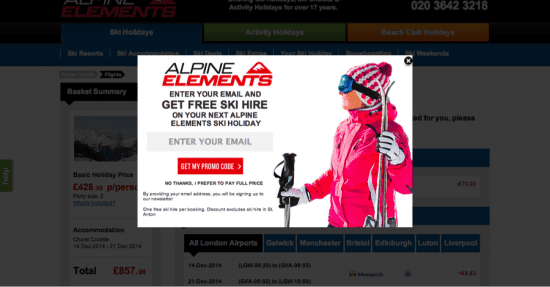 Another approach is to present them with an overlay after they’ve abandoned the cart but before they close the site down. This overlay is triggered by the mouse moving to close down the browser tab.
Another approach is to present them with an overlay after they’ve abandoned the cart but before they close the site down. This overlay is triggered by the mouse moving to close down the browser tab. 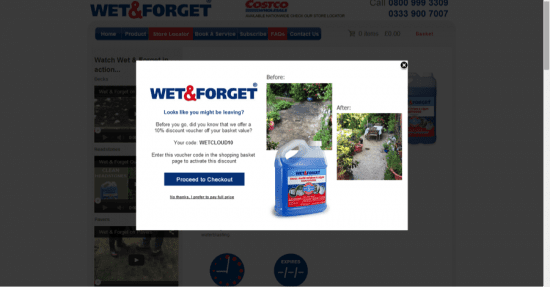
2: Re-targeting the abandoners after they’ve left the website:
Using a smarter than average automated cart recovery tool will enable you to re-target these abandoners by email, secure in the knowledge that the emails aren’t being batch processed, meaning that if the buyer ends up completing the purchase before the scheduled email has been sent, the technology will recognise the conversion has been made and will pull them out of the programme.
10 tips to create an effective Cart Recovery Programme:
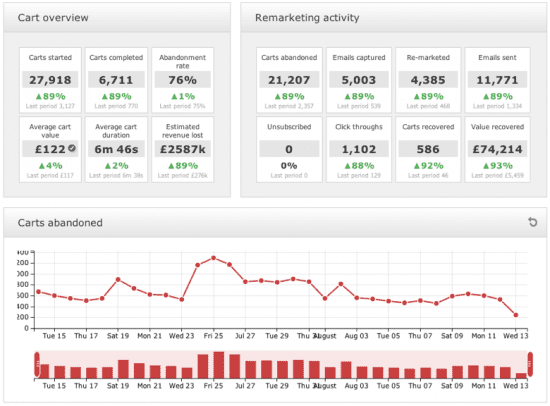
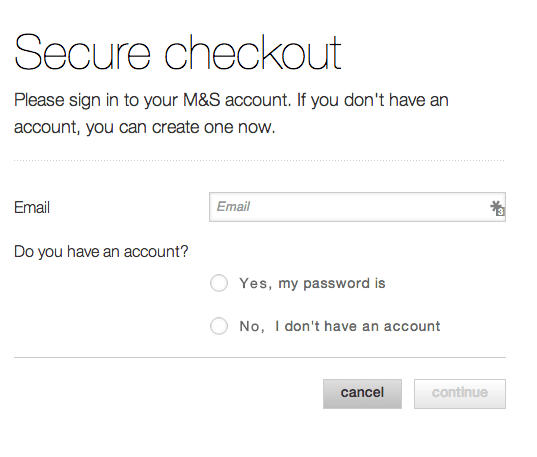
-
3. Be Customer Service Oriented
The success of cart recovery emails largely comes down to the intrinsic nature of these emails, which is one of customer service. By incorporating this messaging within the emails, you will not only be building a stronger relationship with your customer via customer service, but you'll also achieve better results.

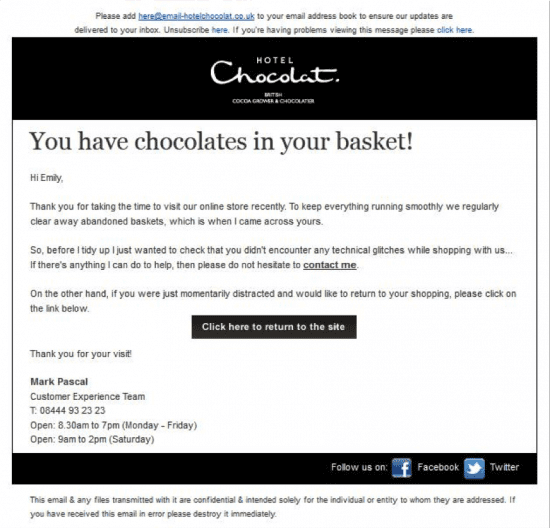
-
4. Get the Timing Right
We recommend a series of 3 emails are sent with the approximate timings as seen below. The first two messages are gentle reminders, aimed at nudging them back to the cart to complete their purchases. The third email has a stronger sales message, as at this stage, research as shown that they're less likely to convert without a bit of persuasion.
35 minutes after
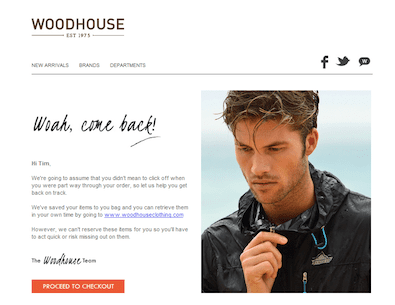 23 hours after
23 hours after 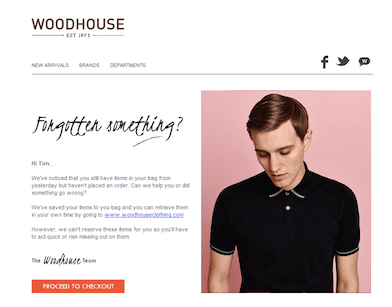 6 Days after
6 Days after 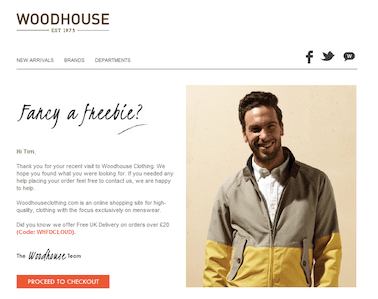
-
5. Clear Calls-To-Actions
These must be clearly highlighted; view cart, continue shopping, complete your order. The call to action button should be clear and prominent enough to encourage customers to return to their shopping basket in a seamless way and complete the checkout process.
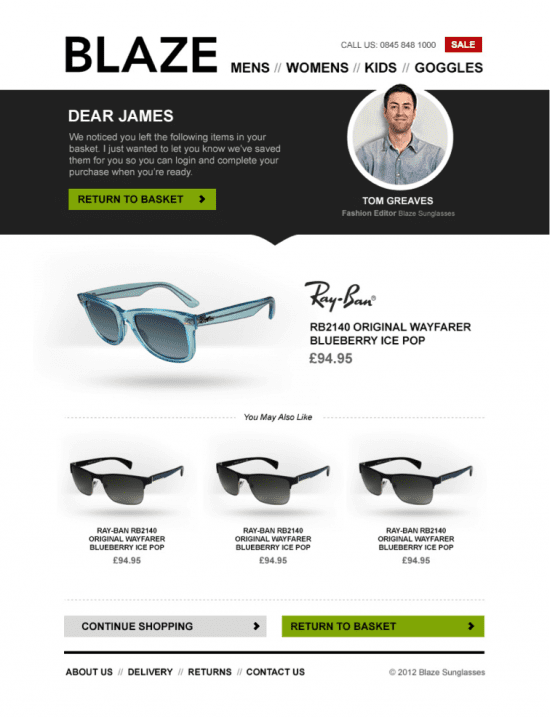
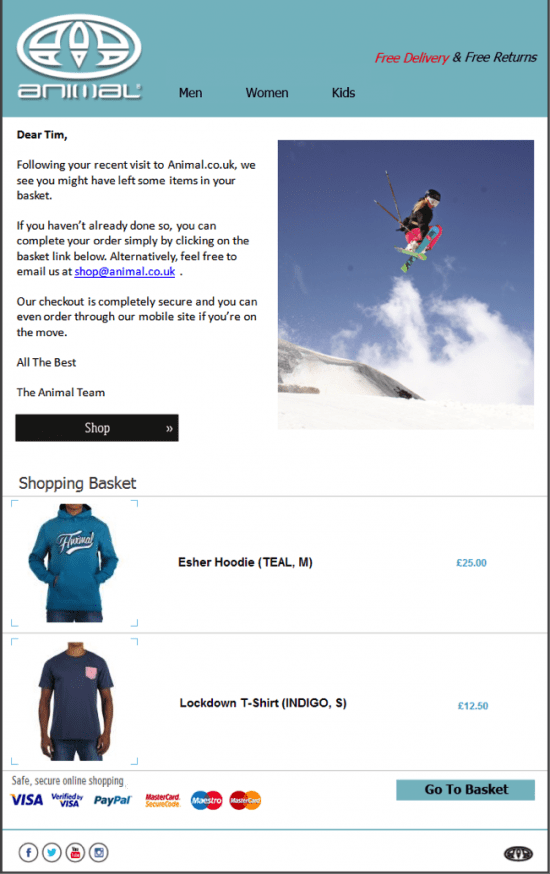
7. Create urgency
When sending the shopping cart reminder you can create a level of urgency by letting your customers know that the shopping cart is available for a limited time only.

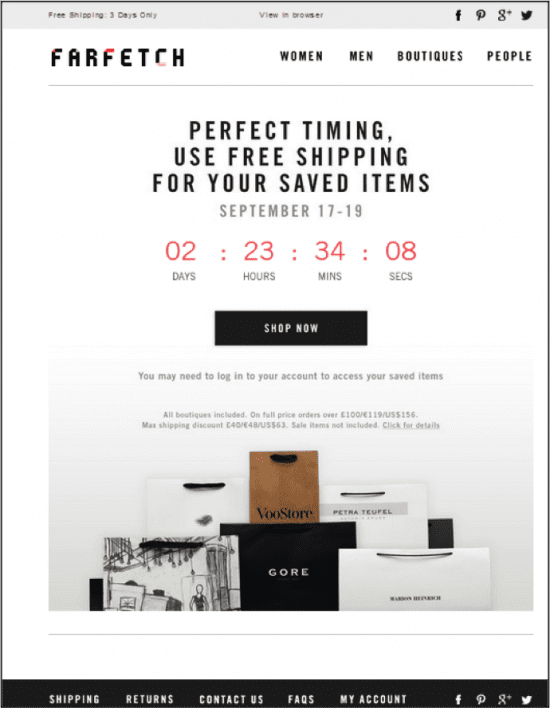
-
8. Personalisation
Most email service providers will enable you to customise your email messages with the recipient’s first name; Dear <<first name>>, we are saving your cart for you, <<first name>> Save xx% on your order, <<first name>> Save xx% on your order, <<first name>> . As well as presenting all product information left in the abandoned cart including images, product description and pricing.
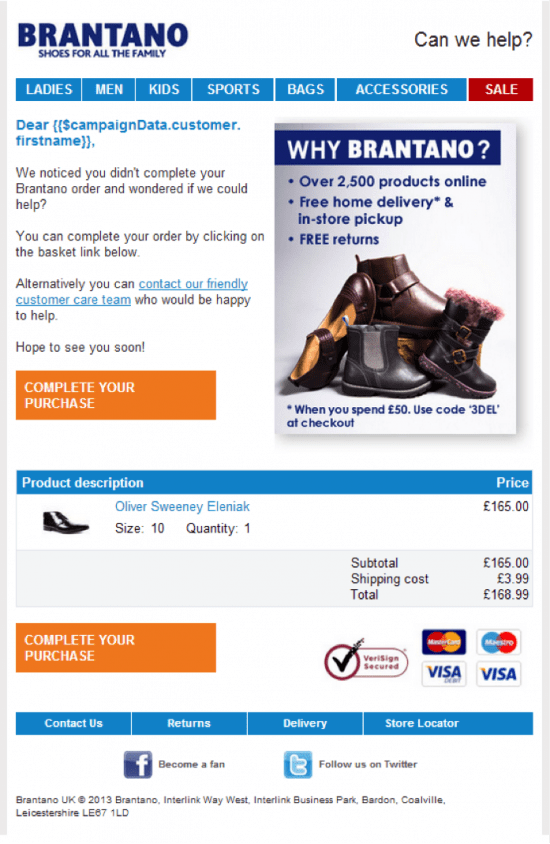
-
9. Don’t condition abandoners
Be very wary of offering deals and incentives too early in this process. If you do offer an incentive, test doing it on the 3rd email as it is at this stage they are less likely to come back and buy unincentivised. Offer it too early and you could start conditioning your customers to abandon knowing they'll be offered a discount.
-
10. Test and optimise
As we've seen, this tactic can generate additional revenue. Even without testing and optimisation, and it can be tempting to sit back and watch the programme work with very little input by ourselves. However, the chances that you're leaving money on the table are actually quite high.
In a test shown on Whichtestwon (as seen below), although Version A had a 10.5% lower open rate, it increased total orders by 21% and increased revenue by 35%!
Subject Line 1. Reminder: Items Saved in Your Cart – Shop Now for an Extra 10% off
Subject Line 2. Come back and Save an Extra 10%
So there it is - the truth about cart recovery. Yes, at first sight it does seem to be a big problem, but in reality, with some very cool technology and a bit of elbow grease (and sage advice!), you can turn this problem into a wonderful revenue generating opportunity.

Thanks to
Kath Pay for sharing their advice and opinions in this post. Kath lives and breathes marketing, she is not only a world renowned speaker and trainer but practices her art in the senior management team and as the Marketing Director of e-commerce conversion experts
CloudIQ. She is recognised as the UK’s leading Email Marketer and heads up training for Econsultancy as well as the Institute of Direct and Digital Marketing (IDM), Emarketeers and B2B Email Marketing.















 Thanks to
Thanks to 

